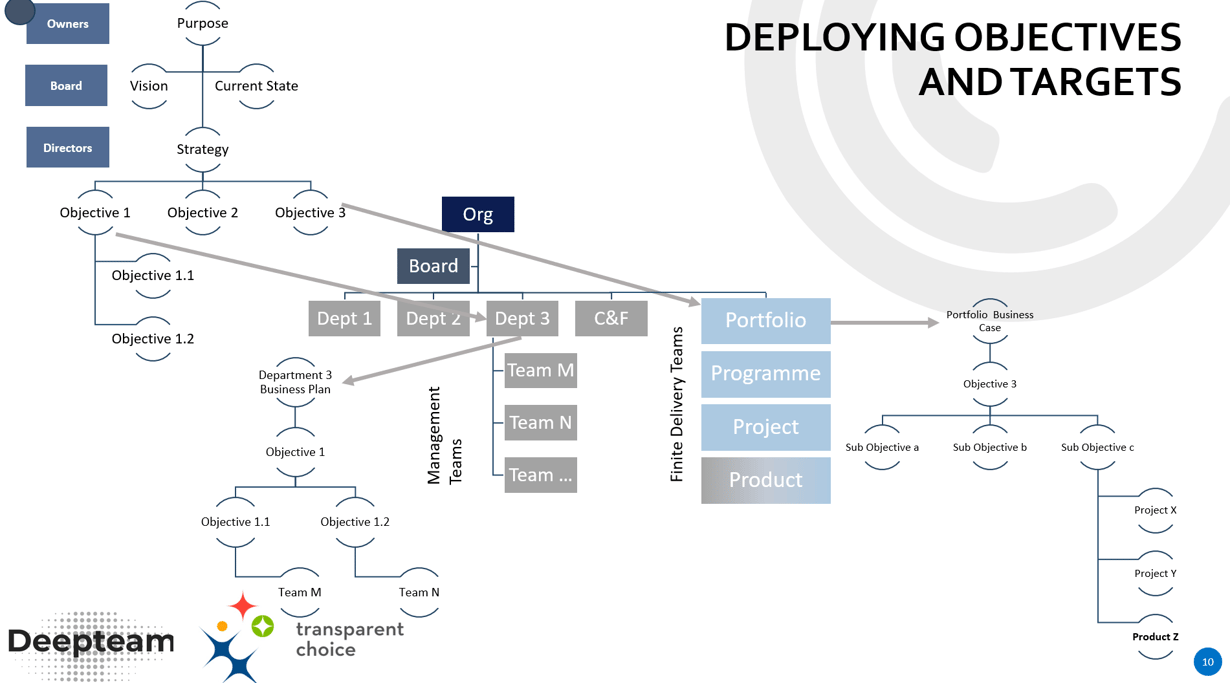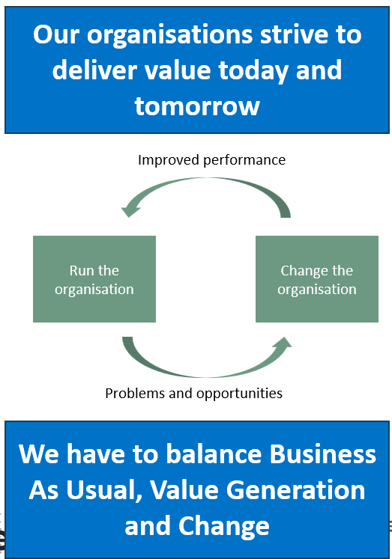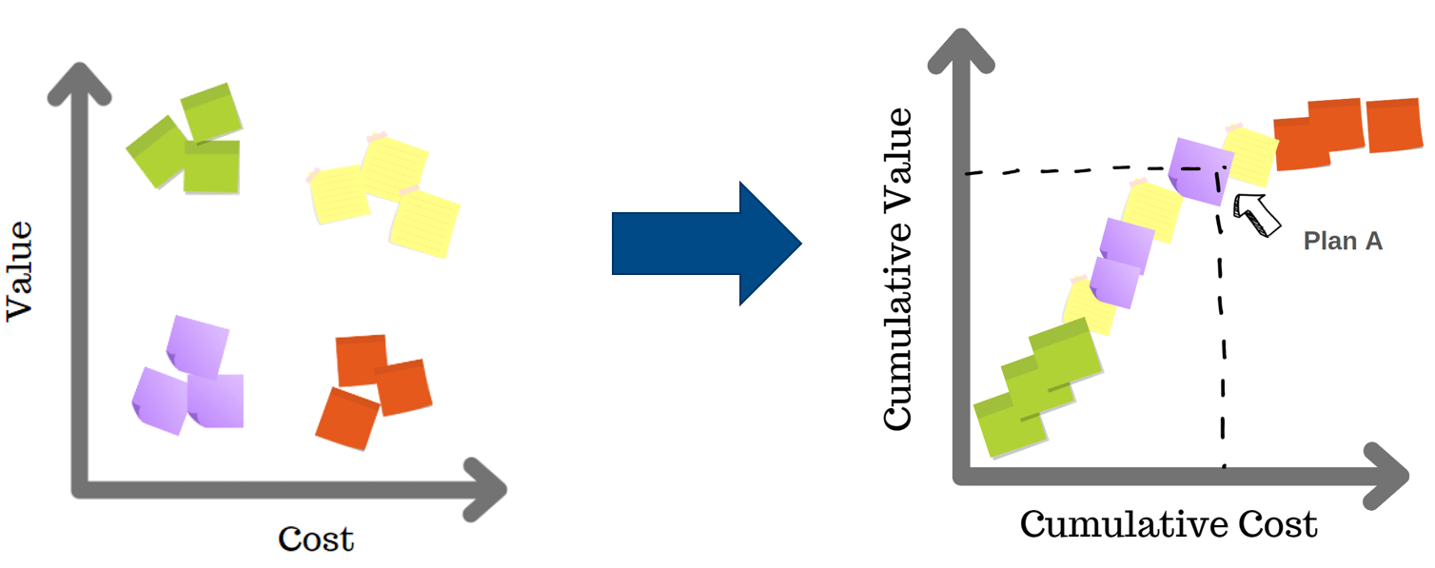Organizational Accountability and Its Role in Strategy Execution
Updated:
Published:
Join Dan and David as they delve into the interplay between organizational accountability and systematic prioritization. They illustrate how with the right tools and commitment, these can be key levers for delivering strategic execution and enhancing accountability across all levels of an organization.
David Dunning leads Deepteam, and is a pioneer of the BIG model (Business Integrated Governance) for more joined up thinking.
Dan Dures heads up Customer Success at TransparentChoice and is often found blogging on all things Prioritization and Strategic Planning.
Organizational Accountability: a core component of Strategic Portfolio Management
Organizational Accountability is a complex challenge which you might be facing into from a number of different perspectives. For the blog we're approaching it as a Strategic Portfolio Management challenge: specifically how do I build a backlog of work that joins my strategy to my resource, and then holds people to account for delivering value.
Specifically, the levers which control resources within an organization must cascade, as high-level strategic goals are translated into specific detailed objectives, which in turn drive the initiatives against which people will be held accountable. This could look something like this:

Making this happen at scale in a complex organization is not easy, but with the right application it is achievable. The key is that individuals controlling organizational resources must be help to account for delivering value against that funding, much in the way that an investor demands payback relative to their investment.
Organizational Accountability needs devolved empowerment
Empowering teams to deliver the strategy is important. How else can you hold them to account? This is why an overly centralized plan rarely succeeds.
This is where organizational accountability steps in. It ensures that while resources are allocated to support divisional initiatives, the choices made align with the overarching central strategy. By defining very clear criteria for what constitutes value to the strategy, you enforce accountability and eliminate ambiguity.
It’s also important for a strategy to recognize that growth is not always the goal. It may be that parts of the organization need to focus on doing more for less, while the more expansive growth initiatives drive performance elsewhere. The key is that this is a choice - do I want to hold people account to deliver growth or drive efficiency? The answer may be a bit of both, but remember, if you ask for too many things you increase the likelihood of achieving nothing.
Again this points to another tenet of organizational accountability: you must set people up to succeed. This is the accountability of a good leadership team.
Organizational accountability needs structured resource allocation
Every organization needs to balance it's ability to run and its need to change. We recommend thinking about this in terms of three portfolios of activity.

Business As Usual: Much of what happens in strategy is within a team, part of their day job. This does not mean that the choices they make are not strategic, indeed some of the most impactful work will come from ‘front line’ staff committing to delivering change.
Value Generation: Cross-team projects are often critical to delivering new initiatives. Put simply, most ambitious projects need teams working together, ideally with a level of agility that means that competing bottlenecks don’t kill momentum. This is where budgeting needs agility, so resources can be moved into growth initiatives, rather than relying on new spending to drive change.
Change: An organization that isn’t prepared to transform is going to under-perform in the long term. This could mean difficult decisions when it comes to disrupting existing power structures, or innovative projects that require resources from outside. The key point is that this is typically not the easy option.
Ensuring these three components integrate with your reporting structure is key: where does work fit into a department, vs. spinning up a new group to deliver? The answer is... it depends. On the organization, the strategy and the culture, which is why a discovery review is often the best way to begin this change process.
Prioritization should follow the same structure:
Business As Usual: Focus on the objectives set for teams but consider the opportunity to review priorities in the context of what they can stop / grow / start. Watch out for shadow portfolios of projects that fly under the radar and commit resources to non-strategic goals. Also ensure support functions’ (such as IT and BI) plans are aligned such that investments in new capabilities are being matched by commitment to implement and realize the benefits in the operating unit.
Value Generation: This is where more agile budgeting is needed to ensure that resource follows strategy, as an enabler not a constraint. The point is that project prioritization should be singular, based on overall strategy, not local based on a ‘bun fight’ between divisional leaders. It’s also important to stress that the value in question relates to contribution to strategy and should not be a land grab exercise for an ambitious manager.
Change: Like Value Generation but consider using different criteria for selection. Potential returns are likely higher, but risk will also be higher too, so a healthy execution plan will need to balance commitments between these big bets and safer more incremental growth projects.
When you prioritize you need to be able to pool potential projects to create choices of where to invest, and where to save. However you simply can't compare some very different types of work, so best to have these buckets in place to enable homogenous analysis against common criteria.
Building Blocks for Accountability
Strategy is complex, but that doesn’t mean it has to be vague. AHP enables leaders to break their strategic goals into measurable ‘criteria’ which can be scored at project level. Once you have this framework you need to create three simple building blocks for your model:

This means your backlog can turn into a ranked set of projects, ordered based on the value for money they will generate. That means you get these two charts, a must-have for a data-led prioritization process:

Already each portfolio leader can work out their own 'Plan A' based on the facts. They are accountable for identifying poor projects and making tough trade-offs.
Now we just need to see how this fits together at a group level. Learn more about data visualization for prioritization here.
Model of Models: Organizational Alignment
With each portfolio ranked, the challenge is to determine how much resource each one should get. This is essentially a leadership judgement call, but the key is to approach it as an analytical rather than a political challenge. We recommend this simple 5-step approach to optimizing your overall business investment:
- Decide what 'Plan A' looks like for each portfolio. What capacity is left? Where are the bottlenecks?
- Identify where to put fungible resources (e.g. new headcount) to address bottlenecks.
- Add contingency rules to boost deliverability, but shared at portfolio level not linked to specific projects.
- 'Fill the backpack' to maximize value, adding in next-best projects where there is space. Or if you're already over capacity then start removing projects with similar logic.
- Iterate model to build buy-in, so the plan is something everyone owns.
Like any allocation process there will be those who get more and those who get less, but it's important to recognize that this is not 'winners' and 'losers'. Organizational accountability means giving everyone the chance to win, but being clear about what that means. If you have a lot of resources then expectations must be higher. If you get less, then objectives must reflect this reality.
Question & Answer: Real World Experiences
We asked the audience to share their war-stories. I’m guessing a few will sounds familiar…
What organizational accountability challenges do you have when it comes to driving strategic alignment?
- Strategy is seen as ‘executive territory’, but it's unclear who owns the end-to-end execution
- Strategy is over-simplified, used as a tag to denote ‘important’ rather than being run as a core thread to align the organization.
- Strategy is seen as an afterthought, tagged onto the day job as a project, not integrated into performance targets or bonuses. Without proper accountability what's the point?
- Lack of consistency with regarding to how strategy cascades, and what it means in the different operating silos within an organization, so people impose their own spin on meaning.
- Crises drive changes in ‘strategy’ because the original strategy was poorly executed, so wasn't resiliant enough when reality arrived.
- Plans get retrofit onto strategy rather than strategy driving the plans in the first place.
How have you tried to fix prioritization (that's not worked)?
- Leadership micro-managing the details: not willing to devolve accountability.
- Leadership painting a ‘big picture’ but not providing detail. (leadership teams seem to cop the blame either way).
- Nobody really prioritizing, so the delivery manager picks what to do - should he really be the accountable one (hint - no).
- Big scoring spreadsheet (that is a nightmare to manage…) creates a breakdown between good intentions and good outcomes.
- Not generating proper cost estimates, especially ignoring internal resource. But how can you hold people to account if it's not clear what they have to work with?
- Lots of U-turns and responding to new crises (as initial plan was wrong).
Clearly this is not an easy challenge to fix, and yet so often it is underestimated as a challenge, which is deemed to be something that can be done in a spreadsheet. (hint, it can't)
Starting the Journey towards Organizational Accountability
We recommend: systematic prioritization, built using fit-for-purpose tooling, and integrated into portfolio selection, OKRs and divisional objectives.
Work with TransparentChoice: if you want scaffolding to make this happen, using Decision Science to get rid of the monster spreadsheet and translate strategy into OKRs. This is Strategic Portfolio Management done properly. Book a call with Dan to chat through your use case.
Work with Deep Team: if you want the consulting support to run a discovery program, and help build the infrastructure to embed prioritization-led accountability. See further resources from Deep Team.
